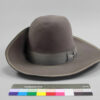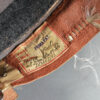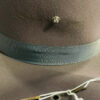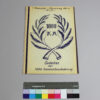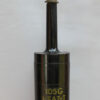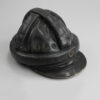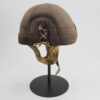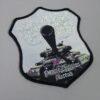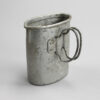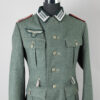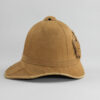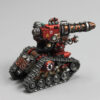Schutztruppe hat from German Southwest Africa, 1896-1913
Inventory number: DPM 1.976
In January 1904, the OvaHerero began a war of liberation against the German colonists in German South West Africa. German colonization had been destroying the Herero’s livelihood, cattle breeding, for years; in 1904, a cattle plague made matters worse.
The German colonies were unprofitable and mainly symbolic in character. The Kaiserreich did not maintain a colonial army like other states; the so-called Schutztruppe was only recruited from volunteers from the four German armies in the Kaiserreich.
The weak and poorly equipped colonial soldiers of the Schutztruppe were hardly able to oppose the OvaHerero fighters. They therefore called for reinforcements from Germany.
In two to three weeks, the soldiers called in as reinforcements received their military training for the colony at the Munster military training area, including riding, shooting and tactics.
For their uniform, they were given the “Südwester”: a floppy hat with a cockade in the imperial colors on one side. For officers, this has a silver border and is removable. The Battle of Ovikokorero in March 1904 showed that these rank insignia were an easy target for the OvaHerero riflemen and the German troops quickly lost their already few officers. The wearer’s affiliation to one of the German colonies can be identified by the color of the ribbon. The cornflower blue grosgrain ribbon for German South West Africa has faded on this hat worn by an enlisted man; the original color can be guessed at behind the brim. The cockade is the officer’s version, which is often found on the surviving Schutztruppe hats, regardless of rank.
The soldiers and their horses were shipped from Munster via Hamburg to the port of Swakopmund on May 20, 1904. When they arrived about three weeks later, the OvaHerero had already retreated to the Waterberg together with their families and the remaining cattle. Due to the successful battles, they expected a negotiation offer from the Germans. However, the Germans attacked again and began a war of annihilation against the OvaHerero after the Battle of the Waterberg in August 1904. The German troops prevented the fighters and their families who had fled to the Omaheke desert from reaching water points and poisoned them. In October 1904, the commander of the Schutztruppe, Lothar von Trotha, proclaimed that “every Herero with or without a rifle, with or without cattle, will be shot. I will no longer take in women and children, drive them back to their people or have them shot.” For the German soldiers, he adds that they should shoot over the heads of the women and children. But driving them back into the desert alone ensured their agonizing death from thirst. As a result, the Nama, who had previously been allied with the Germans, also rose up against the colonial power.
The OvaHerero and Nama survivors were already locked up in so-called concentration camps at this time. These were only partially comparable to the National Socialist camps. For example, the camps in German South West Africa were not set up to systematically kill their inmates, but were intended as re-education and forced labor camps. However, around half of the 15,000 OvaHerero and 2,000 Nama interned died. The war ended in 1908 and the exact total number of deaths is unknown due to a lack of population statistics. Estimates put the population at around 60-80,000 OvaHerero, of whom around two-thirds to three-quarters died in the war. About half of the 20,000 Nama died as a result of the war. On the other hand, around 2,000 of the 14,000 German soldiers sent died as a result of fighting or disease.
The United Nations recognized the war of extermination in German South West Africa, now Namibia, as a war crime and genocide in 1948 – Germany only did so in 2021.
Object of the month
(short) stories from the depot
Unfortunately, many objects cannot currently be shown in the exhibition for conservation reasons. Here you will find unusual objects and exciting stories of special pieces from the depot



